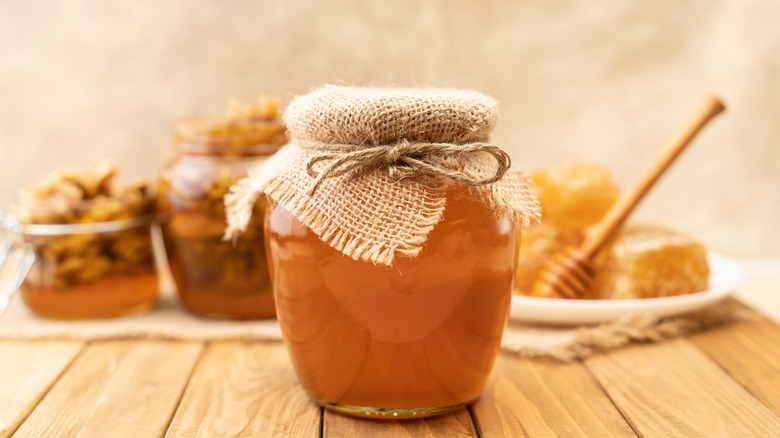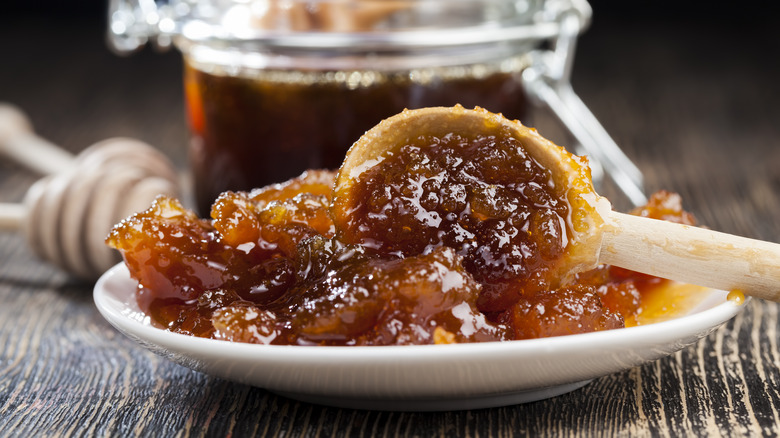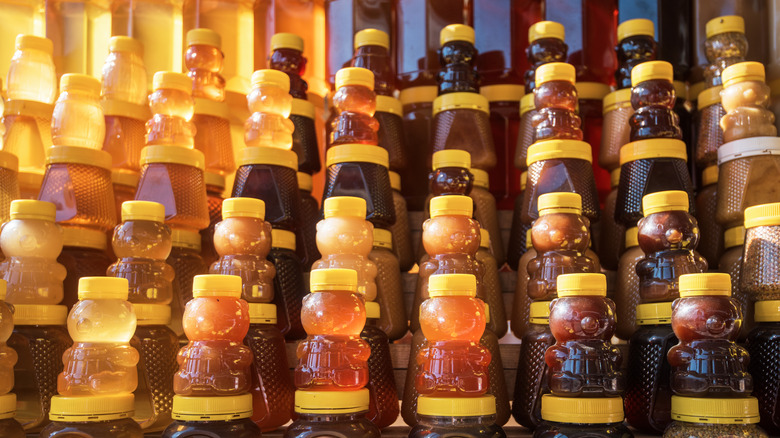Why You Should Think Twice Before Storing Honey In The Fridge
While it's true that honey is one of the few foods that rarely goes bad, its preservation relies heavily on how it's stored. Once it moves from the beehive to your kitchen, it must be kept at room temperature and away from direct sunlight. And don't refrigerate it: Your fridge is just the right temperature to make honey crystallize.
Crystallized honey is clumpy honey that has solidified into chunks and taken on a crunchy texture. It's still safe to eat and some people prefer honey this way, but it can no longer be drizzled onto your toast or into your tea.
Crystallization happens when the water and sugar in honey, which the bees harvest from nectar, separate. It's often a sign that your honey is good quality because commercially processed honey crystallizes more slowly than natural raw honey due to the trace amounts of beeswax and pollen found in the raw version. While it happens to all types of honey eventually, keeping it in the fridge is a guaranteed way to jump-start the process.
How to fix crystallized honey
If you don't want crunchy honey crystals, you'll be happy to learn that crystallization can be reversed — and that de-crystallizing honey is simple. Start by setting a pot of water on the stove with very low heat — around 95 to 105 degrees Fahrenheit is ideal. If it's boiling, it's too hot, and you're likely to destroy some of its natural enzymes and nutrients. Then, place your container of honey into the water. It can be sealed or unsealed, just make sure no water enters the container, and feel free to stir it to speed things up. Eventually, you should find that the honey is back to its old, liquidy self.
Microwaving the honey can work as well, and it's a quicker method that only takes about 30 seconds — but it can be risky. Microwave heat is often uneven and may leave a few stray chunks in your honey. Or, the opposite may happen and you'll burn the honey.
The best ways to store honey
If keeping honey in the fridge means you'll be chewing on that honey later, then how should you store it? When it comes to storing honey, room temperature is always best. The container itself should be tightly sealed, or else the honey could ferment, which means your honey has now gone bad. A glass container works best, rather than plastic or metal since plastic isn't entirely waterproof and may let moisture in or out.
Honey is best stored someplace dark, like a cupboard or pantry. You don't want honey to get too warm or sit out in direct sunlight; this can alter the flavor or darken the honey. If you're not planning on using it for a long time, then freezing honey works just fine. Unlike the fridge, the freezer doesn't cause honey to crystallize because the temperature is too cold for any crystals to form. If you've got lots of honey, keeping some in the freezer and some in the cupboard should keep you with a steady supply that won't crystalize so fast.


